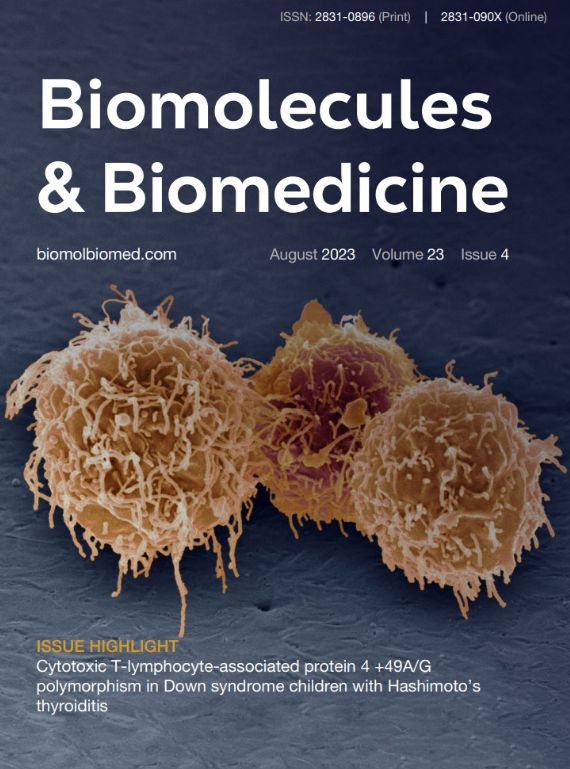Current issue

Volume 23, Issue 2, 2023
Online ISSN: 2831-090X
ISSN: 2831-0896
Volume 23 , Issue 2, (2023)
Published: 11.07.2023.
Open Access
All issues
Contents
16.03.2023.
Research article
Effect of vascular endothelial growth factor rs35569394 in esophageal cancer and response to chemotherapy
Zishan Wang, Chenwei Li, Xinjian Li, Jianguang Shi, Weijie Wu
16.03.2023.
Research article
Prevention of sarcopenia in patients with obesity after bariatric and metabolic surgery: The effect of programmed training on the muscle tissue and anthropometric functions—A randomized controlled trial (SarxOb study protocol)
Marek Bužga, Matej Pekař, Jaroslav Uchytil, Veronika Horká, Jan Malůš, Dominik Vilímek, Zdeněk Švagera, Petr Kutáč, Pavol Holéczy
13.06.2023.
Research article
Dyslipidaemias in patients with diabetes mellitus type 2 - a cumulative impact on coronary artery disease occurence
Cardiovascular complications are one of the leading causes of mortality releted to diabetes mellitus typ 2 (T2DM). Dyslipidemia is one of the associated risk factors for coronary artery disease (CAD) in patients with T2DM. The aims of our study were: to determine the characteristics of lipid disorders in persons with T2DM; to determine the cumulative impact of investigated risk factors (gender, age, genetic predisposition, smoking habits, diabetes mellitus, hypertension, obesity) for the occurence of the coronary artery disease; to determine the influence of lipid profile on coronary artery disease development.
A cross-sectional study was conducted in the Educative Center of the Primary Health Center Banja Luka in the period 01.11.2021–30.04.2022. Adult patients (≥18 years) with T2DM were recruited into the study. The data about socio-demographic characteristics, lifestyle and clinical factors were collected using structural questionnaire as a tool. For all subjects, anthropometric measurements, blood pressure readings, and laboratory findings (fasting blood glucose, HbA1c, lipid profile) were taken.
A total of 221 patients with T2DM participated in the study, 52.03% were males. Hypertriglycerdidemia was found in 63.81% subjects, hypercholesterolemia in 56.60%, low HDL-cholesterol in 49.77% subjects and increased level of LDL-cholesterol in 39.37% subjects. Metabolic dyslipidemia (increased triglyceride levels and low HDL levels), representing the major predictor of CAD, was found in 35.29% subjects. Older age, physical inactivity, obesity, hypertension and high levels of fasting glucose in blood were significantly related to dyslipidaemia in patients with T2DM.
The representation of dyslipidemia in our subjects with T2DM is high, what increases the risk for coronary artery disease. Therefore, it is necessary not only to implement the therapy for glucoregulation, but also the secondary preventive measures for dyslipidemia, and that is the cardiovascular prevention.
Kosana Stanetić, Marijana Radanović Knežević, Verica Petrović, Suzana Savić, Dijana Tomić Prodanović, Brankica Marković











